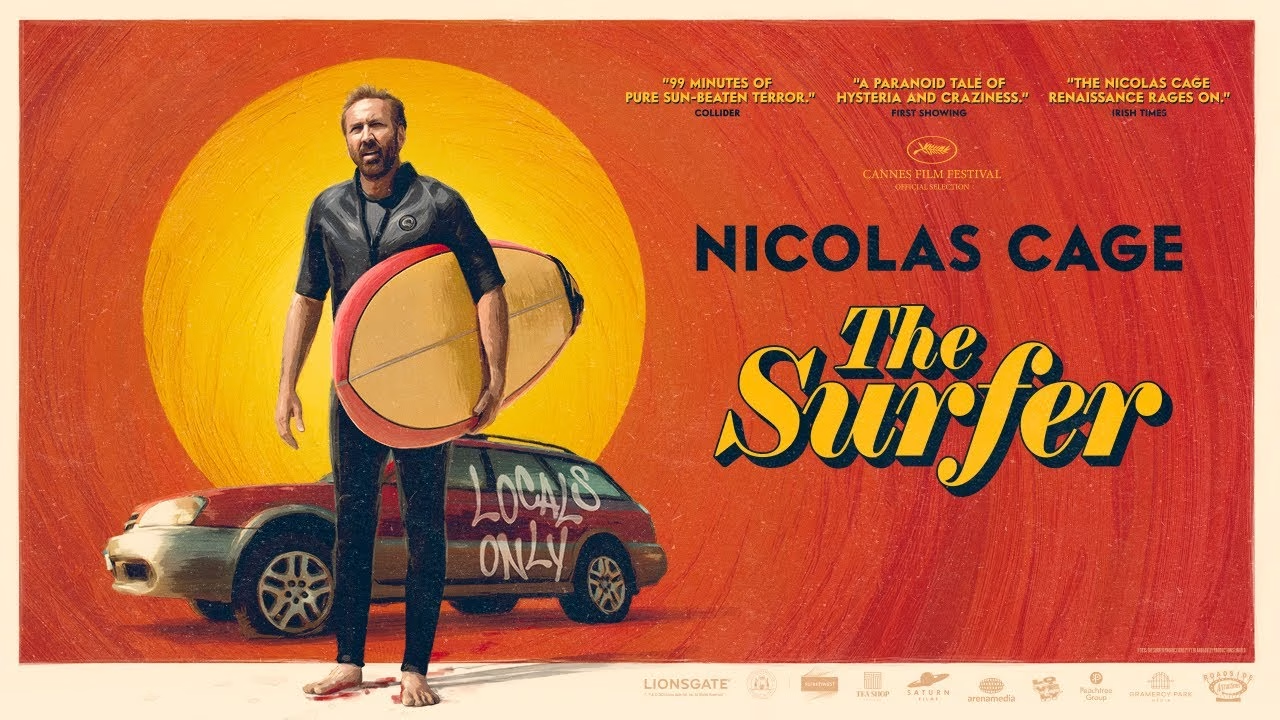As the curtain rises, we’re dazzled by the razor-sharp Australian sun and the golden beaches kissed by turquoise waves. This is more than a landscape; it’s a promise of return—to the past, to innocence, to home. Lorcan Finnegan’s The Surfer drops us into the heart of this radiant paradise, but it doesn’t take long to realize this heaven has teeth. Nicolas Cage’s nameless protagonist, returning with his son to the dreamlike beach of his childhood, embarks on a quest for belonging woven into every grain of sand and every cresting wave. But this pursuit is brutally interrupted by the unyielding reality of a local surf gang, the undisputed rulers of this shore.
The film’s cinematic palette begins to masterfully darken at this point. The warm, nostalgic hues—the golden glow of hope and the inviting blue of the ocean—cool under the shadow of rejection and shame. The sun, once a comforting friend, becomes a merciless enemy, scorching the protagonist’s mind and skin, warping reality itself. Finnegan weaves this visual transformation in parallel with the character’s psychological unraveling. The beach, no longer a space of freedom, morphs into a battleground where the boundaries of toxic masculinity and tribal mentality are drawn. The surf gang’s leader, Scally, and his followers, with their bronzed skin gleaming under the sun and their eerie calm, are portrayed as a primal, almost elemental force—dangerous as nature itself. Their presence taints the film’s colors; unsettling shadows creep into the vibrant tones, heralding an approaching storm.
At the center of this visual inferno, Nicolas Cage delivers a performance teetering on the edge of his trademark magnificent madness. We watch as his character, initially a civilized father, slowly transforms into a creature under the relentless sun. As his sanity slips away with the salt water and sweat, the camera, too, loses its focus alongside him. Reality blurs like a mirage distorted by heatwaves. Vandalism, theft, and paranoia weave into the story’s fabric, while the wild Australian landscape mirrors this inner chaos. The boundless, indifferent expanse underscores just how small and fragile a human can be.
The Surfer transcends a simple revenge tale, offering a surreal portrait of a soul rotting under the sun. Finnegan pulls the audience into a nightmare draped in vibrant colors, posing profound questions about identity, belonging, and the dangers of nostalgia. It’s a visually stunning and unsettling experience, where sand is stained with blood and sunlight is tainted with madness. As the film ends, what lingers is the roar of the waves and the image of a man lost in an endless battle with his own reflection under the merciless sun.














